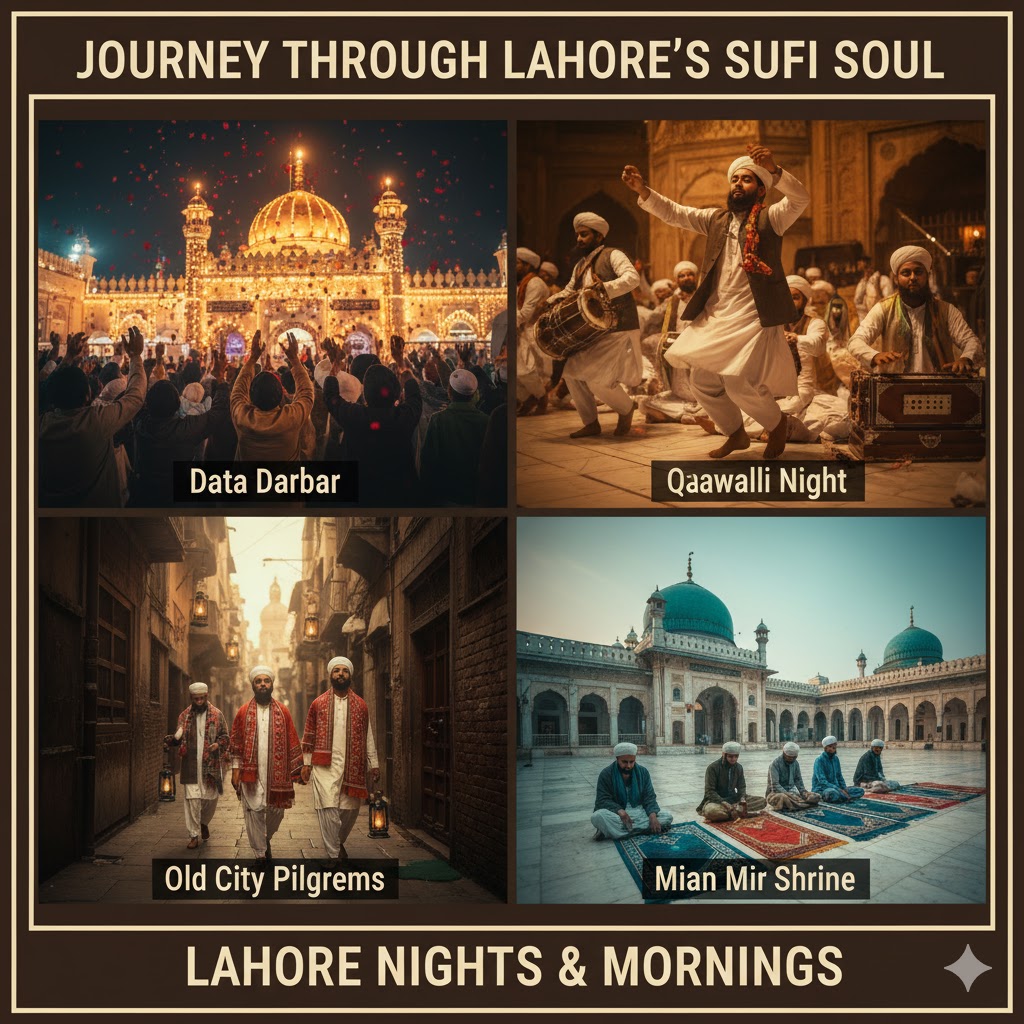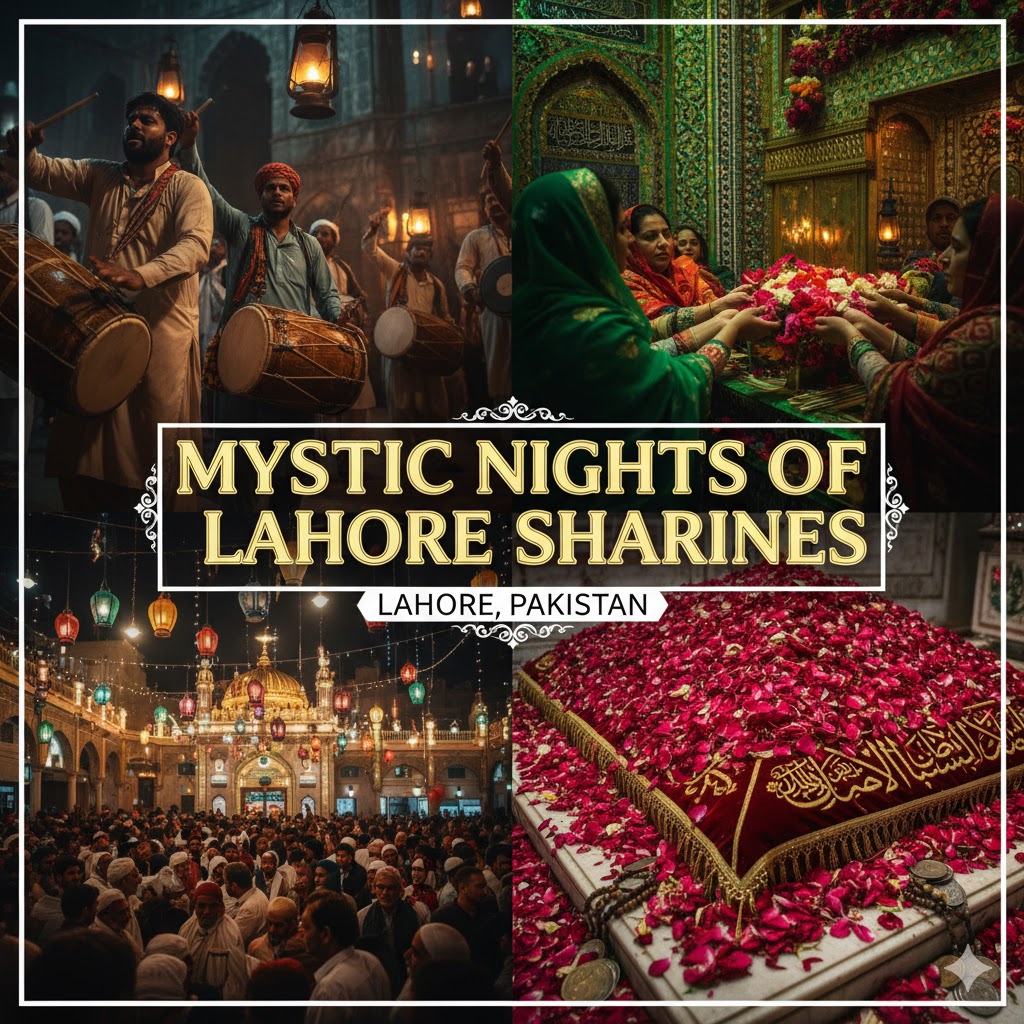Introduction
Step into the timeless heart of Lahore, where ancient shrines, qawwali melodies, and centuries-old alleys whisper tales of love, devotion, and spiritual enlightenment. The Lahore Sufi Heritage Walks 2026 offer a deeply immersive journey through the city’s spiritual landmarks — from the tomb of Data Ganj Bakhsh to Shah Jamal, Mian Mir, and the hidden Bibi Pak Daman shrine.
These heritage walks are curated to help travelers experience Lahore’s living Sufi traditions — its hospitality, poetry, and musical soul — while engaging with locals, historians, and qawwals who keep this culture alive.
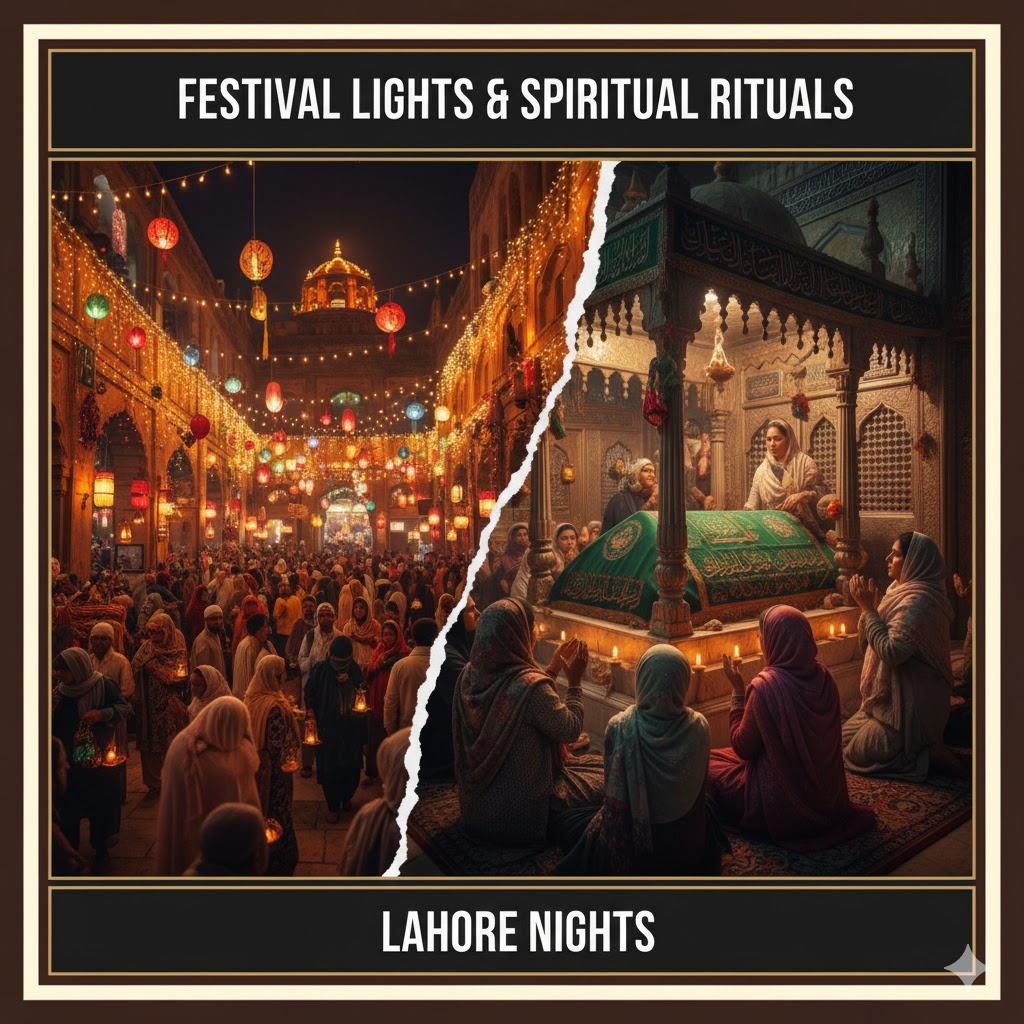
1. Data Darbar (Shrine of Hazrat Ali Hujwiri)
The starting point of most Sufi heritage walks, Data Darbar is Lahore’s spiritual nucleus. Built over a millennium ago, it attracts millions of devotees each year. The atmosphere here — filled with rose petals, prayers, and qawwali music — embodies the Sufi message of compassion.
Visitors often arrive early to observe rituals, interact with qawwals, and experience the serene shrine ambiance. Guided walks help travelers understand the historical significance, legends, and architectural beauty of the shrine.
Highlights: Qawwali nights, Thursday congregations, communal meals, rose petal offerings.
Hidden Gems: Quiet corners of the shrine, small courtyards for reflection, and artisans making devotional items.
Local Tips: Respect the dress code, remove shoes, and join the langar meal for a true cultural experience.
Food & Drinks Nearby: Street vendors offer halwa, samosas, and doodh-patti chai outside the shrine.
Photography Tips: Golden hour shots of the domes, wide-angle for crowd scenes, and low-light handheld for qawwali sessions.
Accommodation: Nearby guesthouses and central Lahore hotels provide convenient access.
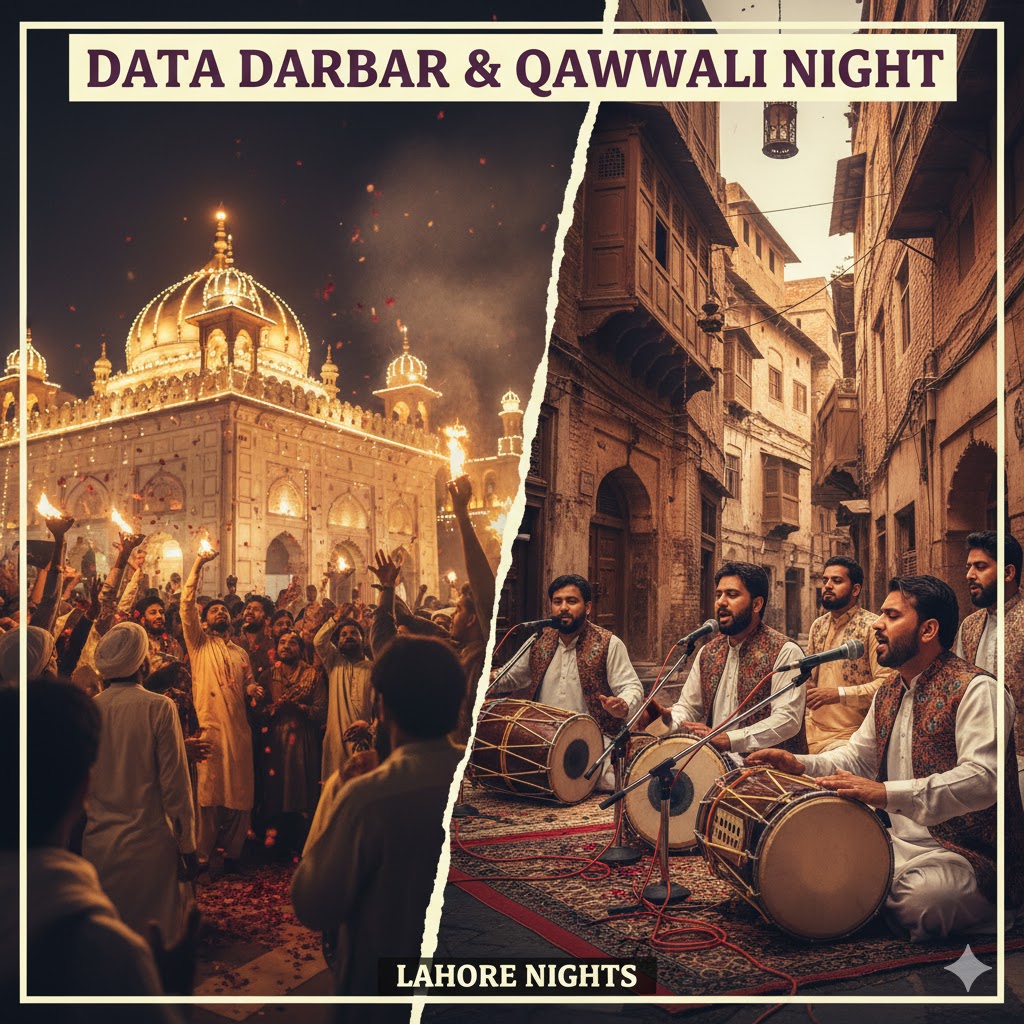
FAQs – Data Darbar:
Q1: How long should I plan for visiting Data Darbar?
A1: Typically 2–3 hours including Qawwali sessions, rituals, and exploring courtyard areas.
Q2: Can international tourists join the Thursday night Qawwali?
A2: Yes, all visitors are welcome. Guided walks enhance understanding of cultural and religious practices.
2. Shrine of Mian Mir
Known for his message of unity between religions, Mian Mir was a Sufi saint respected by Muslims and Sikhs alike. His shrine exudes peace, simplicity, and spiritual warmth, often hosting meditative recitations and folk music nights.
Visitors experience serene courtyards, prayer sessions, and local devotional rituals. Guides explain Mian Mir’s historical significance and connections to Sikh Gurus.
Highlights: Spiritual tranquility, inclusive teachings, local poetry sessions.
Hidden Gems: Private courtyards, small tea stalls with storytelling sessions.
Local Tips: Visit during morning hours for quiet reflection and photography.
Food & Drinks Nearby: Chai shops and small snack stalls.
Photography Tips: Capture the serene courtyards and pilgrims at prayer.
Accommodation: Nearby guesthouses and central Lahore hotels.
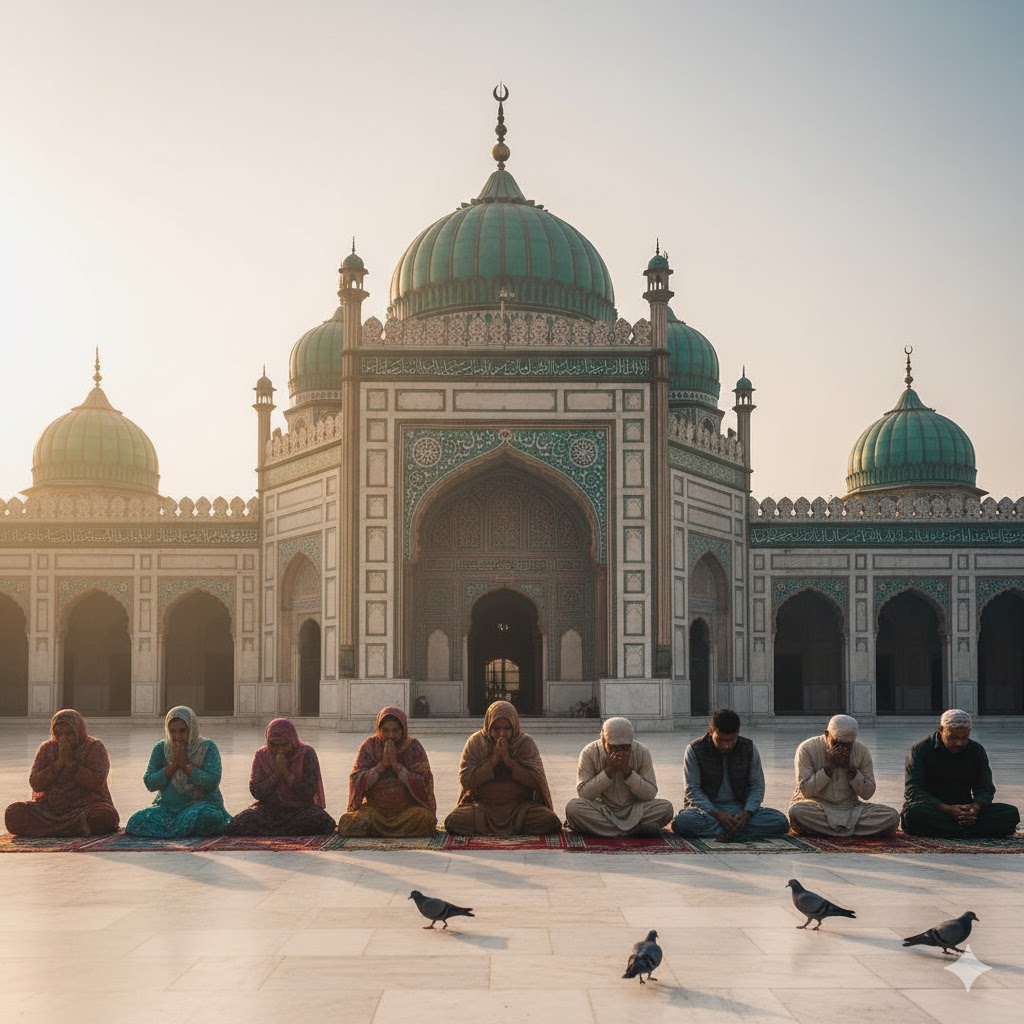
FAQs – Mian Mir Shrine:
Q1: Is the shrine suitable for solo travelers?
A1: Yes, it is peaceful and secure, ideal for meditation and cultural learning.
Q2: Are photography and videography allowed?
A2: Yes, respectfully and without disturbing devotees.
3. Shah Jamal Shrine
Every Thursday night, Shah Jamal’s shrine transforms into a festival of dhol beats and trance dances. This vibrant display of devotion attracts youth, fakirs, and local musicians celebrating spiritual ecstasy.
Visitors can experience dynamic rituals, dhol drumming, and devotional singing, gaining insight into Lahore’s living Sufi culture.
Highlights: Thursday trance nights, music and dance performances, interactive spiritual rituals.
Hidden Gems: Back courtyards with intimate gatherings, small local poetry sessions.
Local Tips: Arrive early for best views; wear comfortable shoes for walking and standing.
Food & Drinks Nearby: Street snacks and chai vendors.
Photography Tips: Capture the movement and energy of dhol sessions.
Accommodation: Guesthouses and budget hotels nearby.
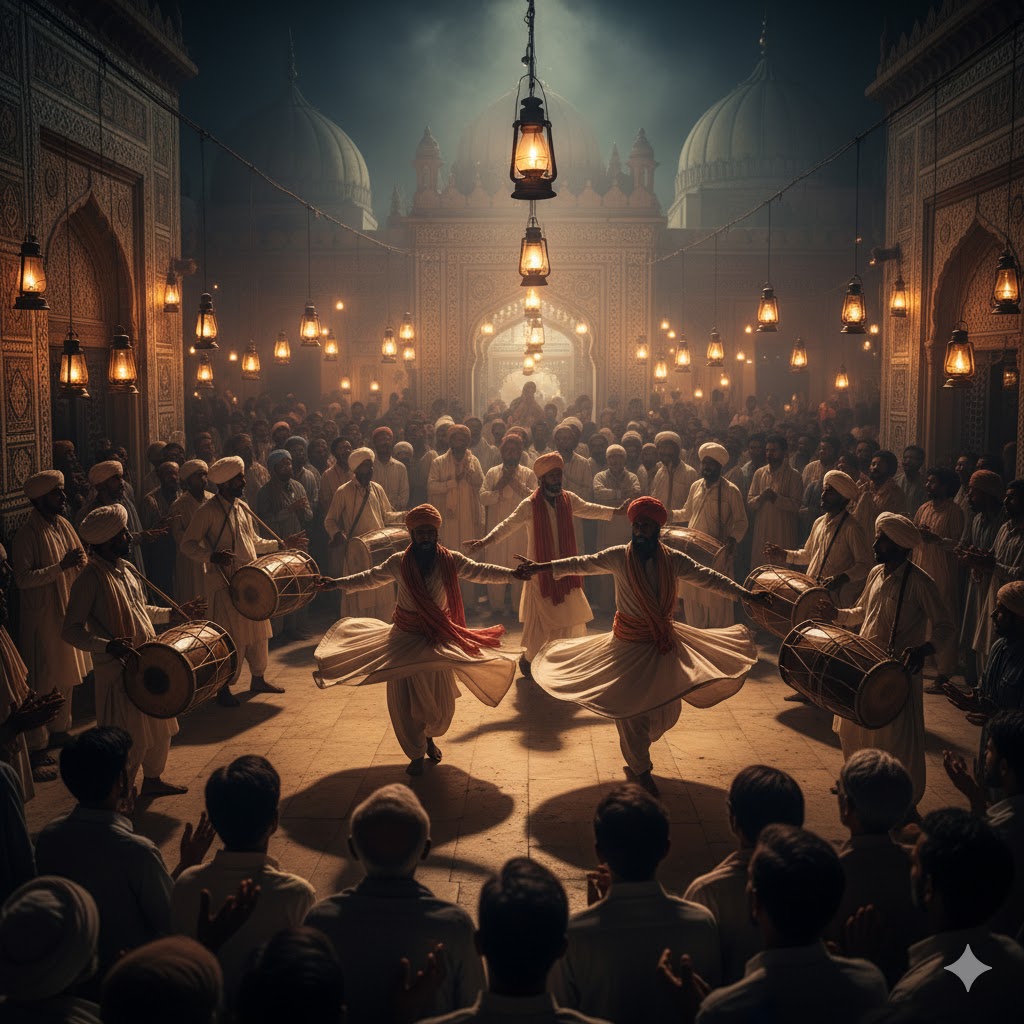
FAQs – Shah Jamal Shrine:
Q1: Are these trance nights suitable for families?
A1: Yes, though the environment is lively; children can enjoy cultural exposure.
Q2: Can visitors participate in the rituals?
A2: Participation is allowed respectfully, under guidance.
4. Bibi Pak Daman Shrine
One of Lahore’s most sacred yet hidden shrines, Bibi Pak Daman is believed to house the remains of six women from the Prophet’s family. Visitors experience quiet reflection, devotional rituals, and serene courtyard walks.
Local guides provide stories about the shrine’s historical significance and legends, offering travelers a deep connection to spiritual traditions.
Highlights: Spiritual serenity, historical legends, devotional rituals.
Hidden Gems: Nearby alleys with flower vendors and devotional artisans.
Local Tips: Modest attire required; early visits recommended to avoid crowds.
Food & Drinks Nearby: Tea stalls and snack vendors.
Photography Tips: Capture intimate courtyard spaces, ritual objects, and devotees in reflection.
Accommodation: Nearby guesthouses.
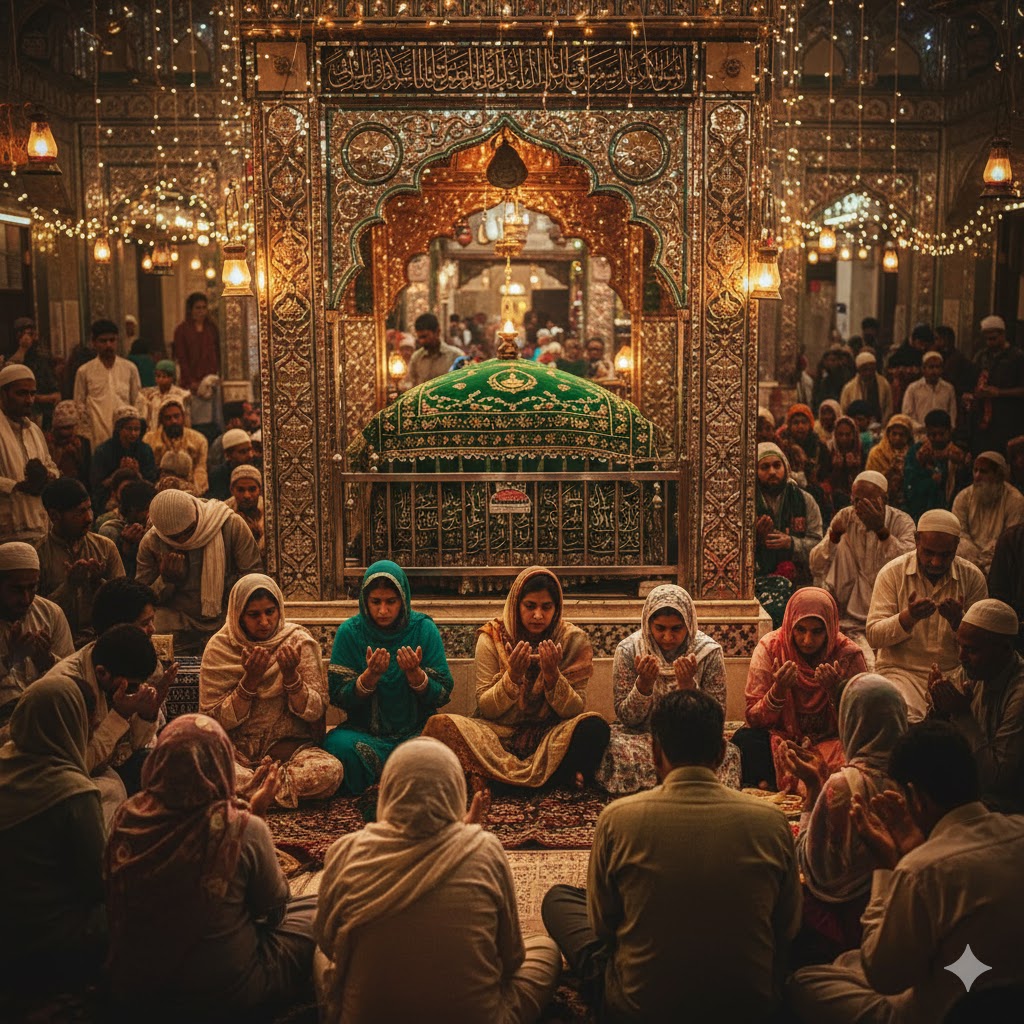
FAQs – Bibi Pak Daman:
Q1: Is the shrine suitable for international visitors?
A1: Yes, it is welcoming to tourists and pilgrims alike.
Q2: What is the best time to visit?
A2: Early morning or late afternoon for peaceful visits and photography.
5. Hidden Sufi Corners & Alleys
Beyond main shrines, Lahore’s old city holds smaller, lesser-known shrines like Pir Baba Shams Tabrez, artisan workshops, and small mosques. Travelers can interact with locals sharing saint legends, traditional crafts, and poetry.
Highlights: Authentic cultural immersion, intimate Sufi experiences, storytelling.
Hidden Gems: Artisans creating devotional crafts, quiet courtyards, small poetry sessions.
Local Tips: Walk with a guide to navigate narrow alleys safely.
Food & Drinks Nearby: Local tea stalls and snack vendors.
Photography Tips: Use low-light handheld techniques and wide-angle lenses.
Accommodation: Central Lahore guesthouses.
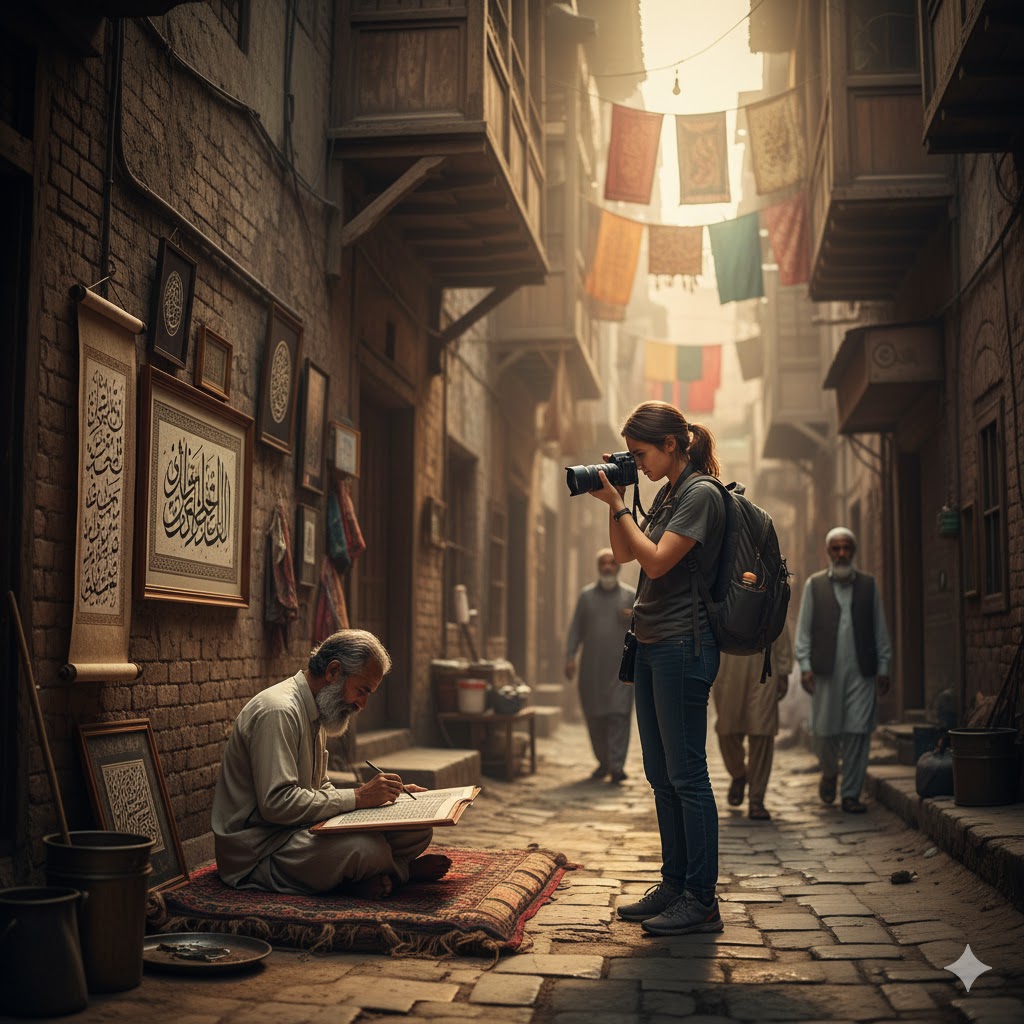
FAQs – Hidden Sufi Corners:
Q1: Are these locations safe for solo travelers?
A1: Yes, if walking in groups or with a registered guide.
Q2: Can visitors buy souvenirs from local artisans?
A2: Yes, purchasing is encouraged to support local culture.
6. Annual Sufi Events 2026
- Mela Chiraghan (March 29–31, 2026): Festival of lights at Data Darbar with qawwali and devotional dances.
- Urs of Data Ganj Bakhsh (October, 3 Days): Pilgrims from across Pakistan gather for prayers, music, and communal meals.
- Shah Jamal Trance Nights (Weekly, Thursday): Music, dance, and spiritual rituals.
Highlights: Vibrant festivals, qawwali performances, devotional dances.
Hidden Gems: Private poetry sessions, artisan exhibitions.
Local Tips: Arrive early, dress modestly, respect rituals.
Food & Drinks Nearby: Langar meals, street snacks, halwa, doodh-patti chai.
Photography Tips: Evening and night photography of illuminated shrines.
Accommodation: Nearby hotels and guesthouses.
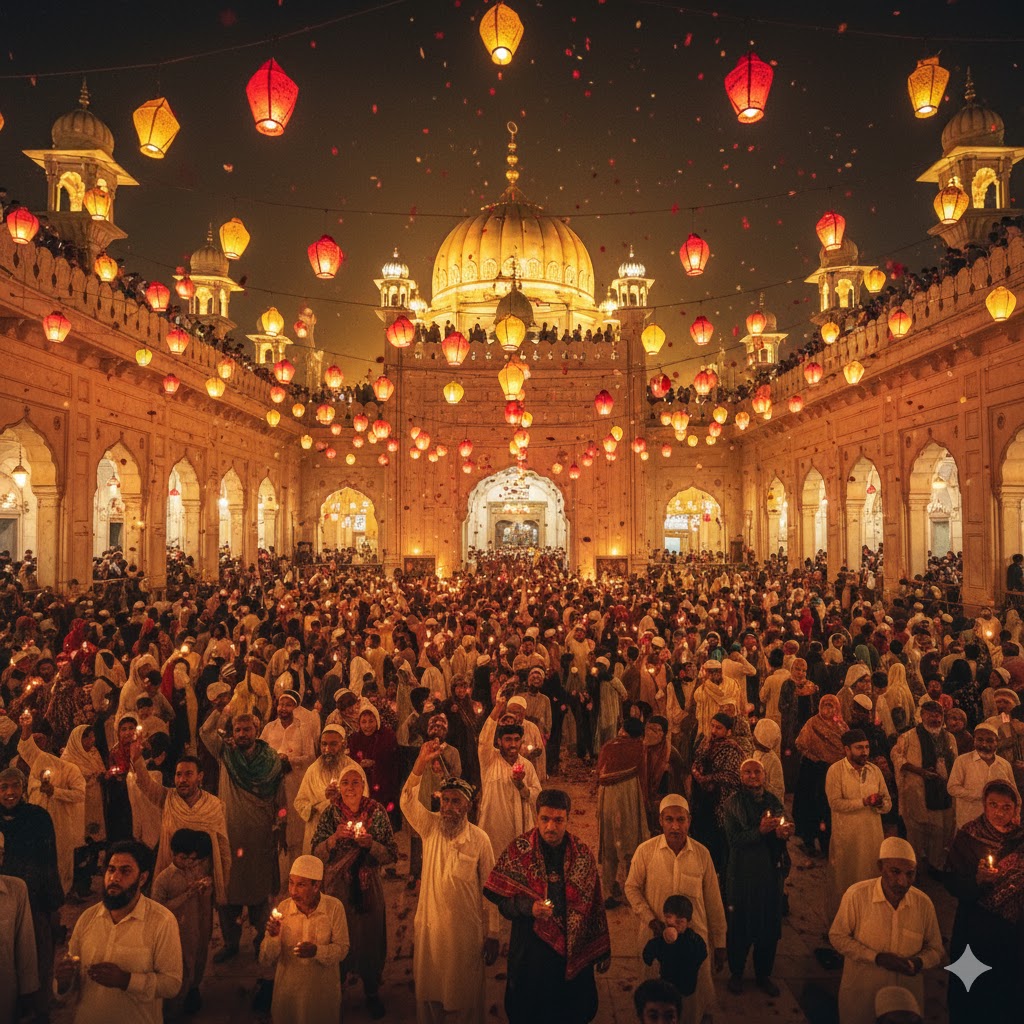
FAQs – Annual Sufi Events:
Q1: Are these festivals open to tourists?
A1: Yes, visitors are welcome to observe and participate respectfully.
Q2: When is the best time for photography during festivals?
A2: Evening or night sessions for vibrant lights and ritual scenes.
7. Food, Hospitality & Cultural Flavors
Lahore Sufi walks provide authentic culinary experiences, from langar meals at shrines to street foods at Bhatti Gate and Gawalmandi. Try halwa, samosas, pakoras, jalebi, and doodh-patti chai.
Local Tips: Try langar meals with devotees for immersive experiences; moderate consumption while walking.
Photography Tips: Capture vibrant street food stalls and devotees enjoying meals.
Accommodation: Central guesthouses and hotels near Old City.
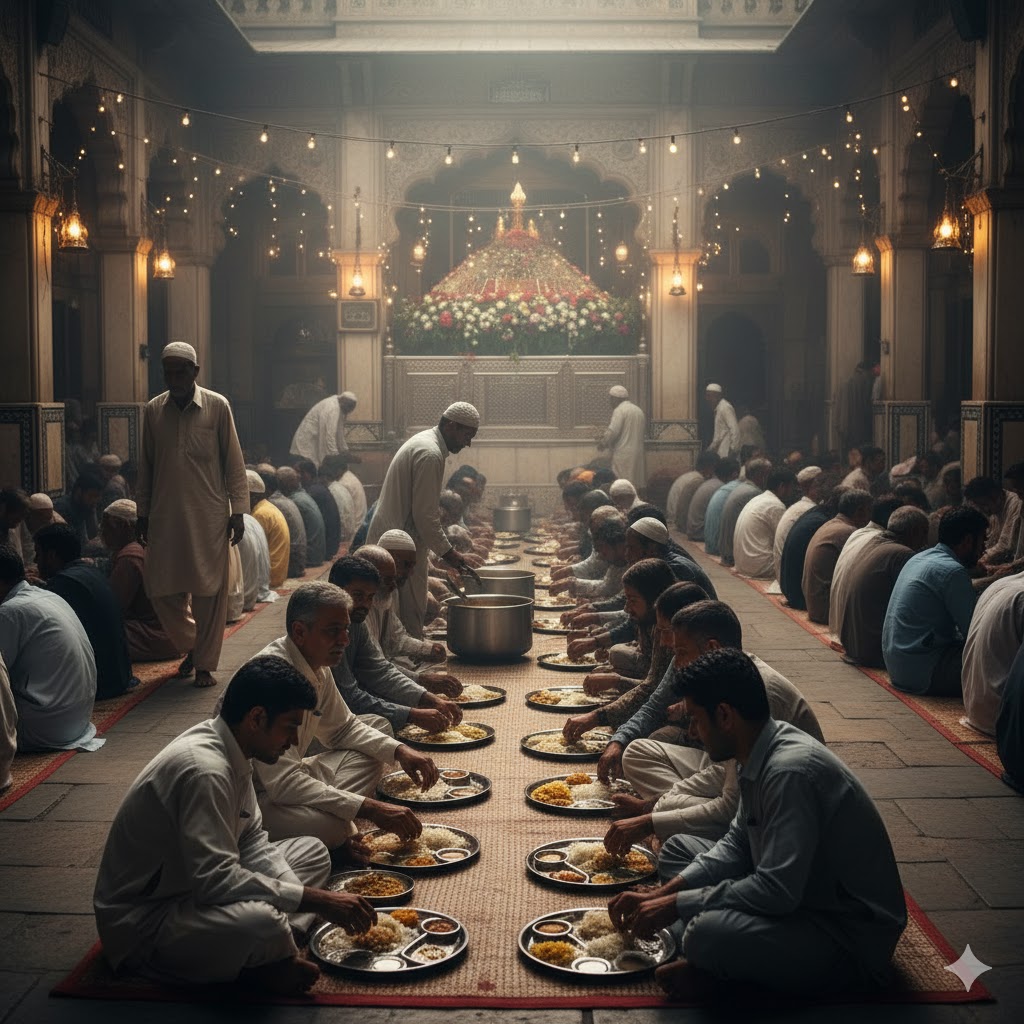
8. Photography & Travel Tips
- Evening Qawwali sessions and shrine lights provide dramatic, cinematic shots.
- Golden hour for domes and courtyard architecture.
- Wide-angle lenses for architecture, zoom lenses for rituals.
- Avoid flash inside prayer halls; maintain respectful distance.
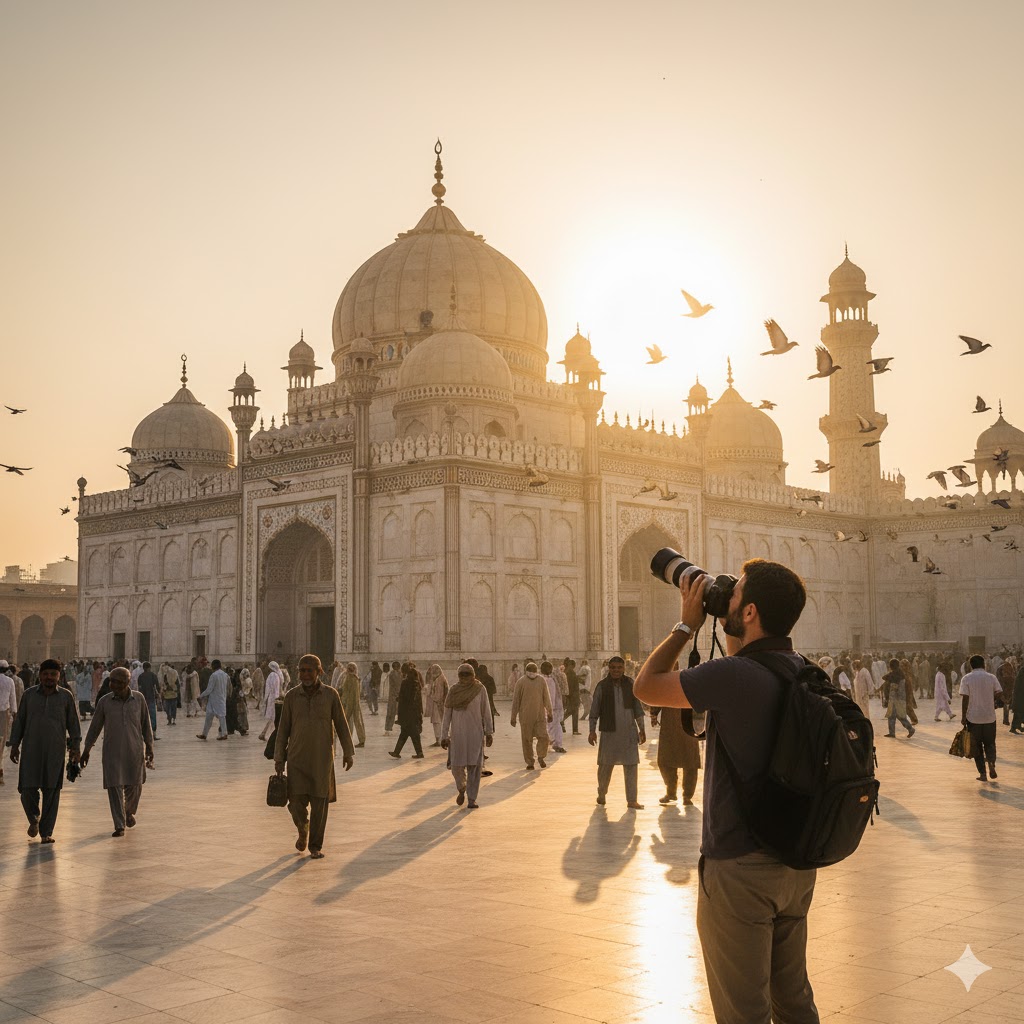
- Must See:
- Source:
FAQs – Complete Article
Q1: How long does a full Sufi Heritage Walk take?
A1: Typically 4–6 hours for main shrines and hidden corners; full-day walks include Bibi Pak Daman and artisan workshops.
Q2: Are Sufi Heritage Walks suitable for children and elderly travelers?
A2: Yes, routes are accessible; wear comfortable shoes and maintain moderate pace.
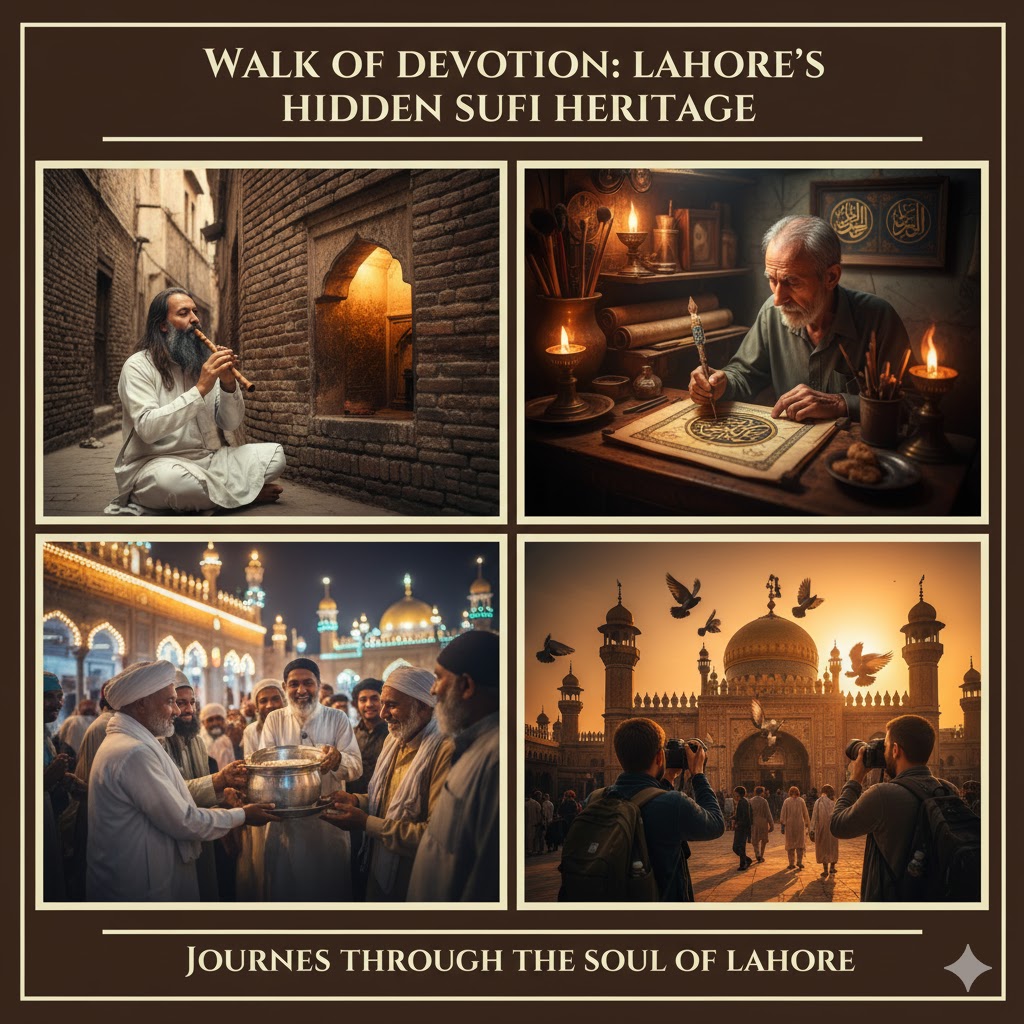
The Spirit of Lahore’s Sufi Culture
Lahore’s identity is deeply rooted in Sufi mysticism. The city has long been a center for spiritual seekers, where Sufi saints spread messages of peace, tolerance, and divine love. Walking through the old walled city, travelers encounter scented incense, devotional songs, and the rhythm of the dhol — each element reflecting Lahore’s soulful legacy.
Locals say, “If you want to feel Lahore’s heart, listen to qawwali under the shrine lights.” These words ring true for anyone who’s stood in the courtyard of Data Darbar on a Thursday night, surrounded by pilgrims and the hum of devotion.
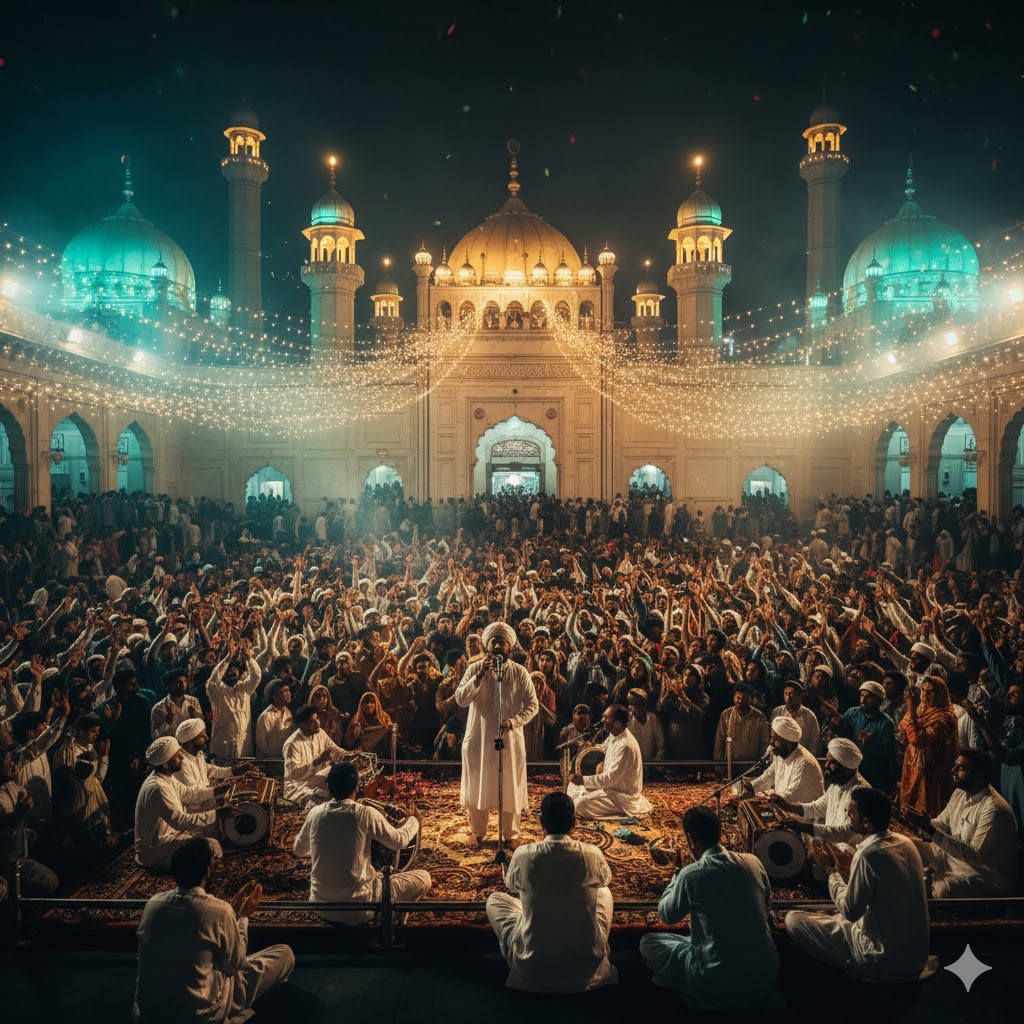
Major Stops on the Sufi Heritage Walks
Data Darbar (Shrine of Hazrat Ali Hujwiri)
The starting point of most Sufi heritage walks, Data Darbar is Lahore’s spiritual nucleus. Built over a millennium ago, it attracts millions of devotees each year. The atmosphere here — filled with rose petals, prayers, and qawwali music — embodies the Sufi message of compassion.
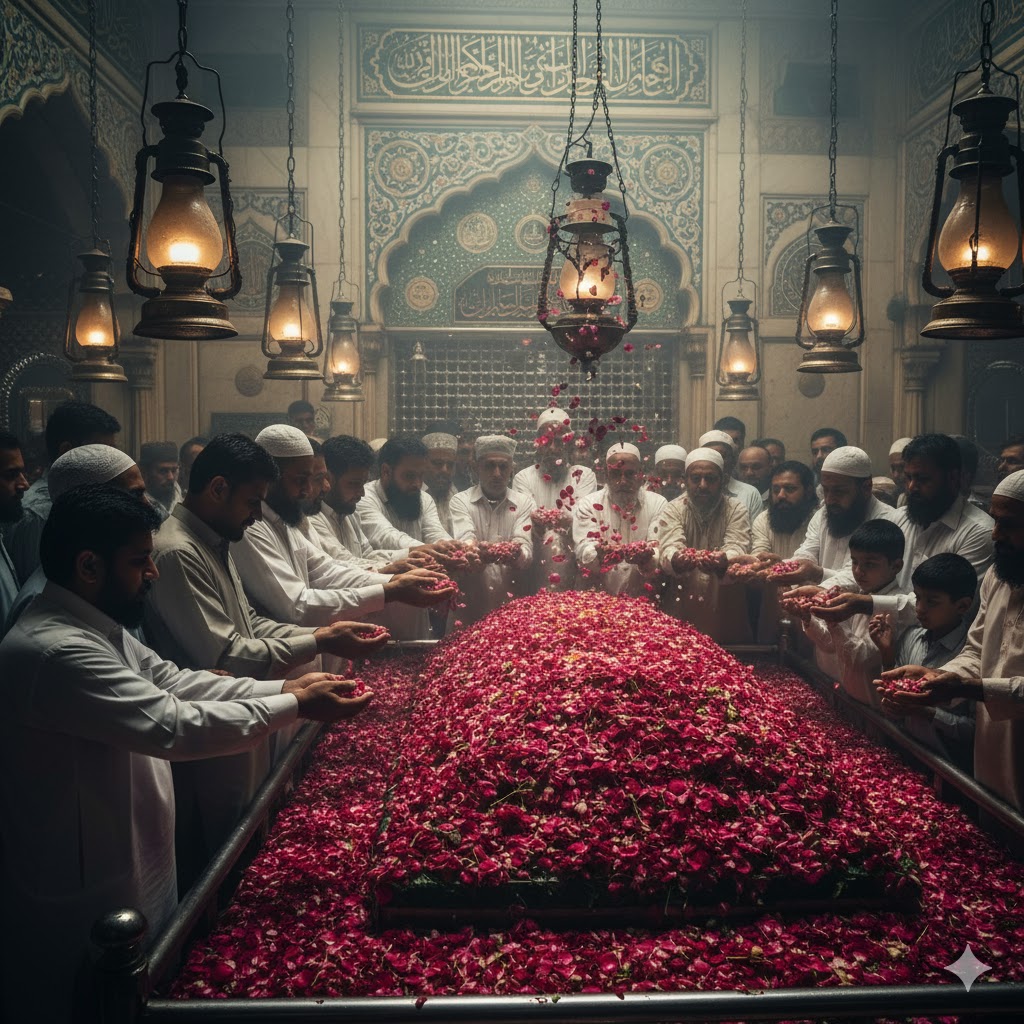
Shrine of Mian Mir (Shadman, Lahore)
Known for his message of unity between religions, Mian Mir was a Sufi saint respected by Muslims and Sikhs alike. His shrine exudes peace, simplicity, and spiritual warmth, often hosting meditative recitations and folk music nights.
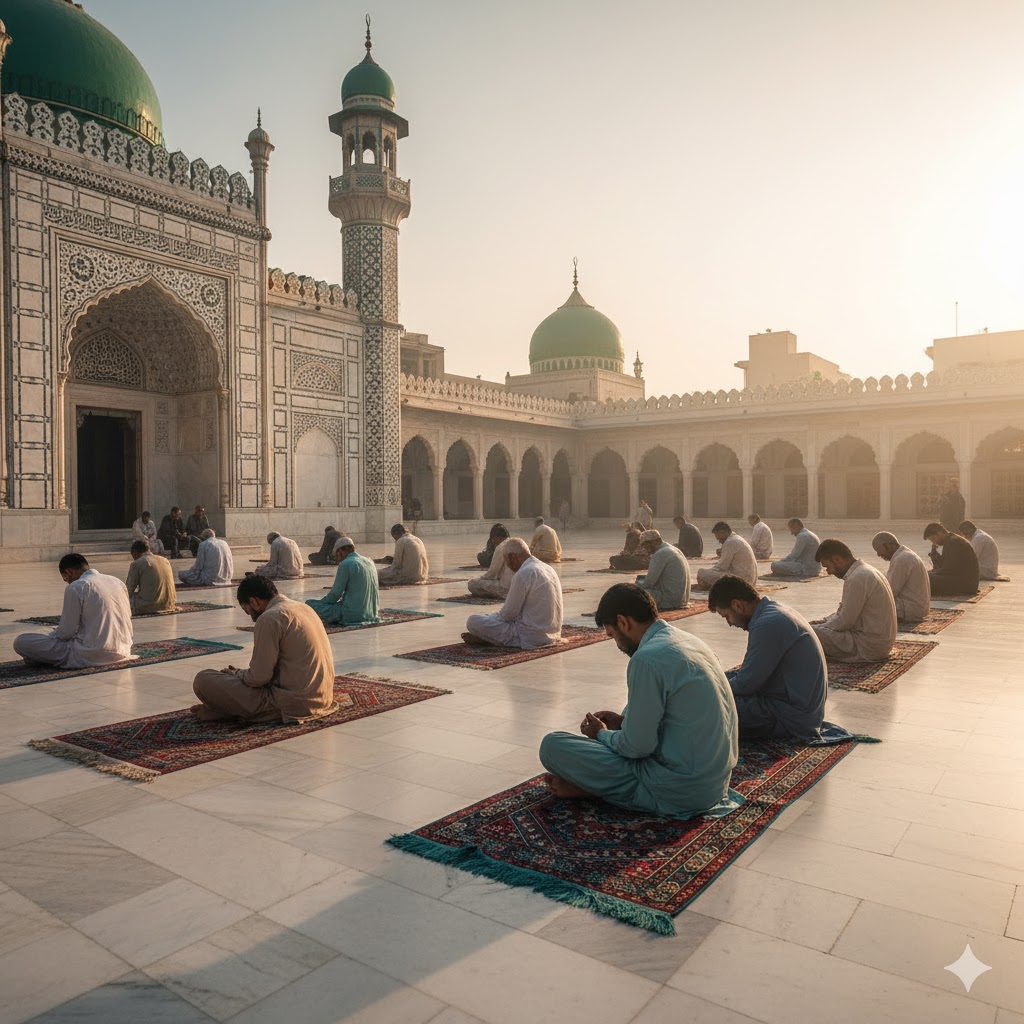
Shah Jamal Shrine (Ichra, Lahore)
Every Thursday night, Shah Jamal’s shrine turns into a festival of dhol beats and trance dances. This space brings together youth, fakirs, and artists, celebrating spiritual ecstasy through music. The energy here symbolizes Lahore’s blend of tradition and modern devotion.
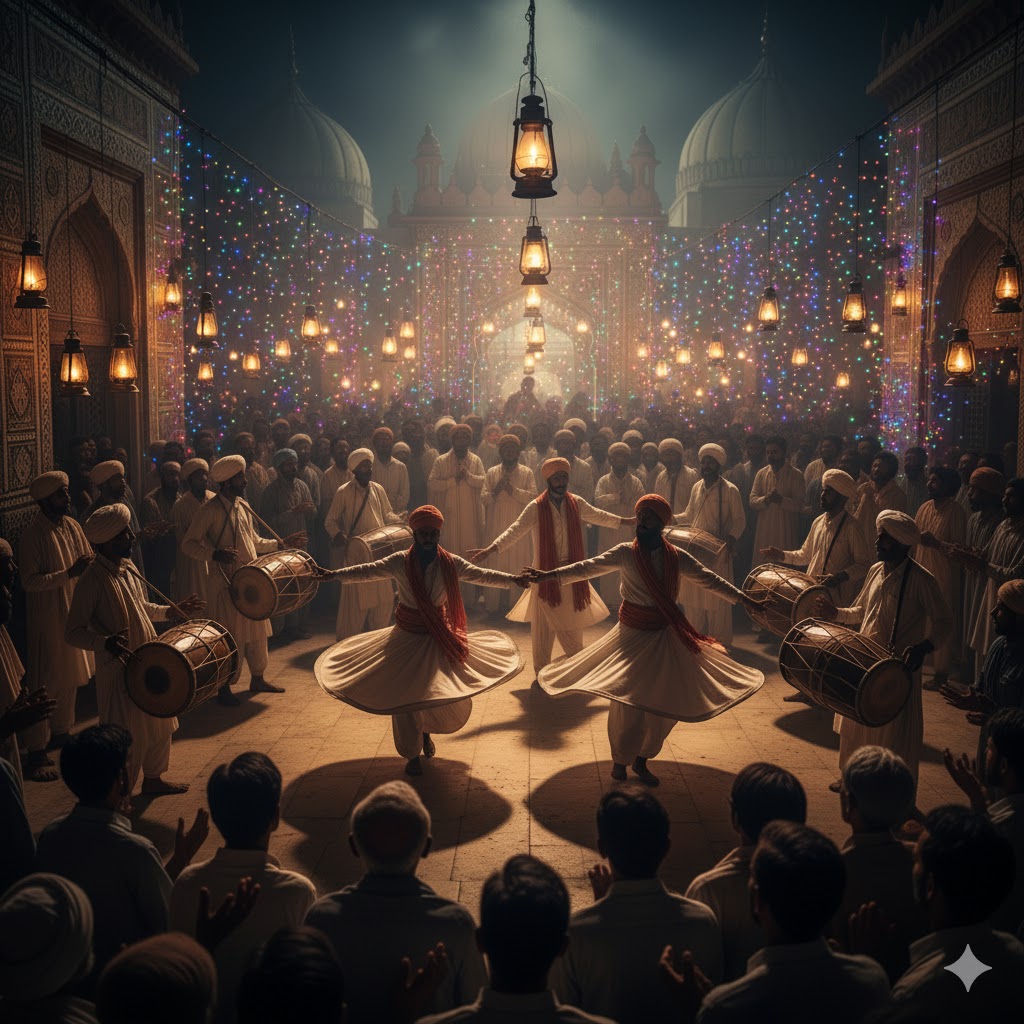
Bibi Pak Daman (Old City)
One of Lahore’s most sacred yet hidden shrines, Bibi Pak Daman is believed to be the resting place of six women from the Prophet’s family. The narrow alleys leading to it are lined with flower vendors and devotees offering chadars.
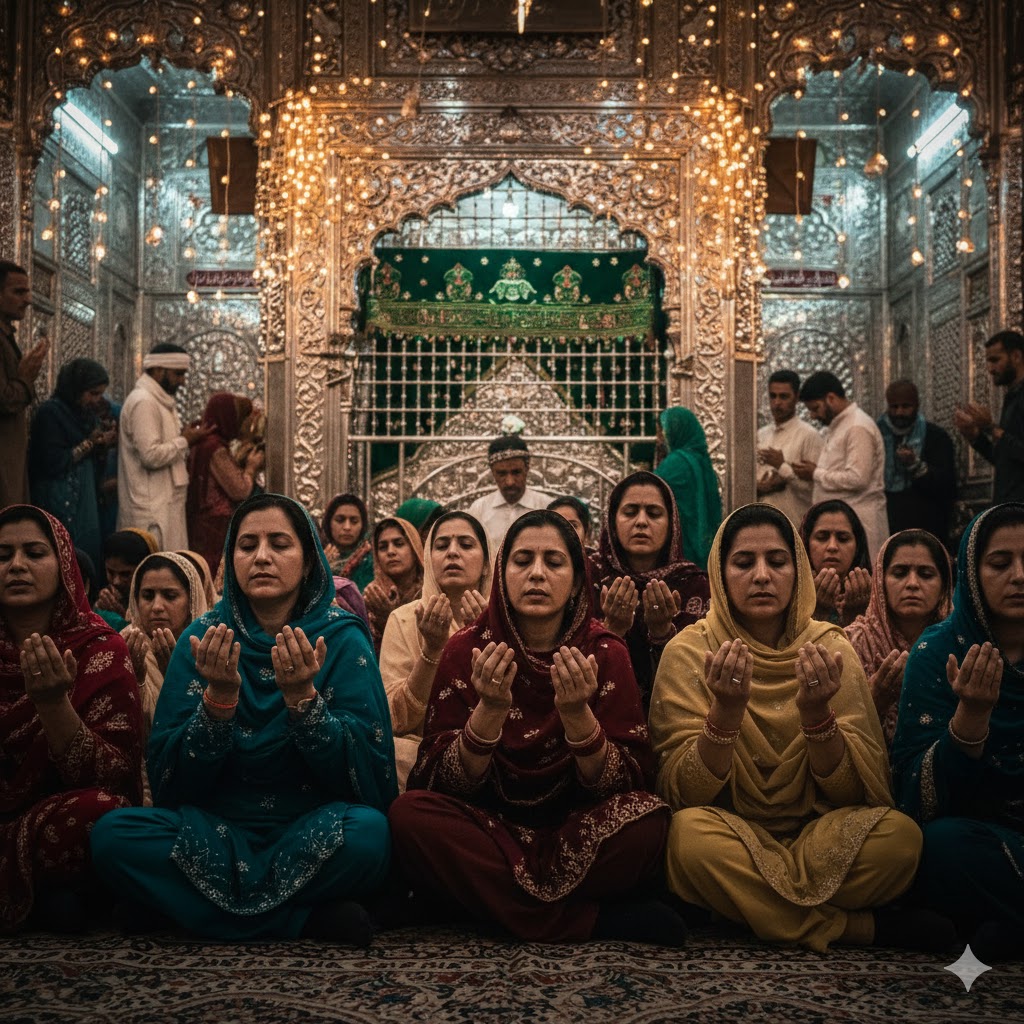
Hidden Gems Along the Route
Beyond the famous shrines, the Sufi Heritage Walk reveals unseen corners of old Lahore — small shrines, poetry gatherings, and tea stalls where stories of saints are shared over cups of chai. Hidden spots like Pir Baba Shams Tabrez’s corner shrine and the Sufi art galleries near Bhatti Gate are favorites for history lovers and photographers alike.
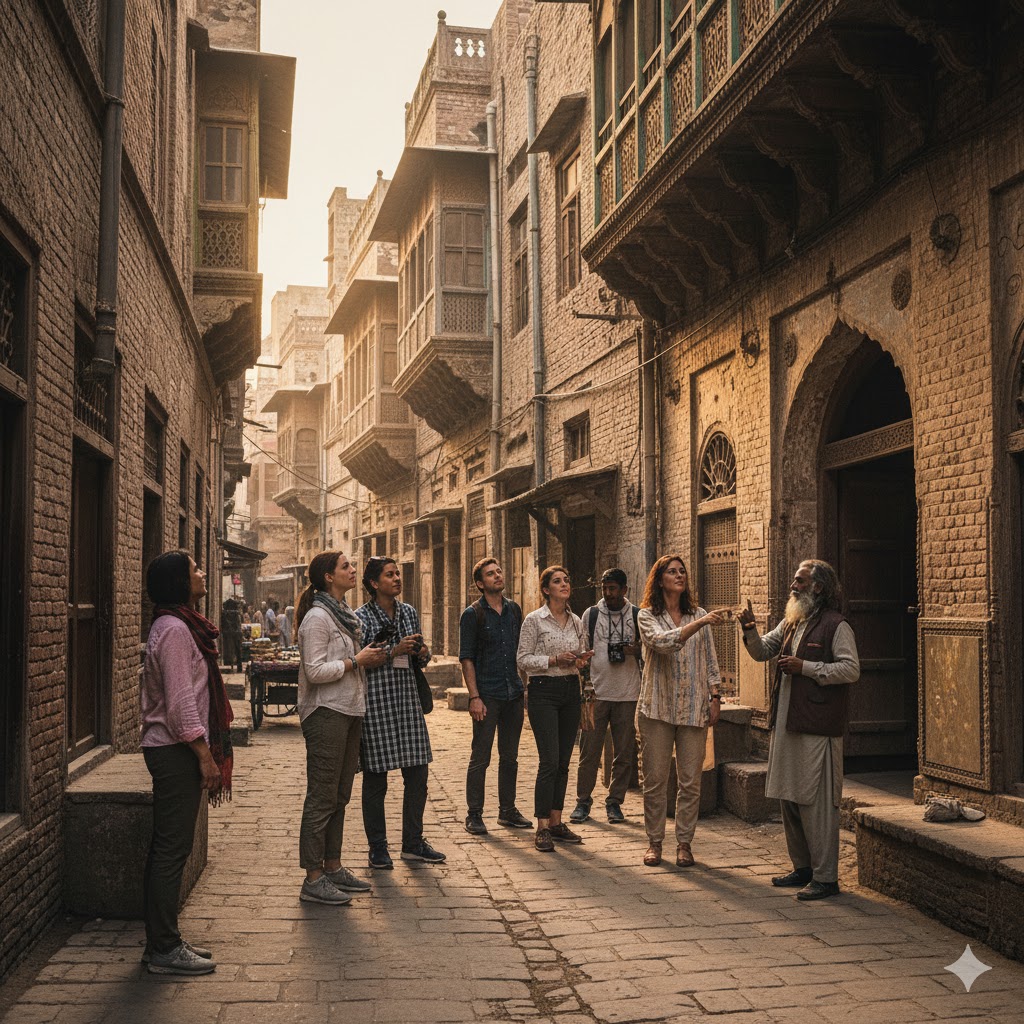
Local guides often share oral histories — tales of miracles, music, and the evolution of Lahore’s Sufi architecture. Many walks end at Heera Mandi’s cultural quarter, where traditional ghazal performances echo old Lahore’s artistic soul.
Qawwali Nights, Poetry, and Hidden Experiences
1. Qawwali Nights – The Soul of Lahore Sufism
The heart of Lahore’s Sufi heritage beats strongest during Thursday night Qawwali sessions. At Data Darbar, Shah Jamal, and smaller shrines, devotees gather to listen to devotional songs that narrate stories of divine love. The rhythmic dhol, harmonium, and clapping create an immersive spiritual ambiance.
Local guides emphasize that early evening arrivals provide the best experience, allowing visitors to observe preparations, witness rituals, and interact with qawwals. These sessions often continue late into the night, with pilgrims singing, dancing, and offering prayers.
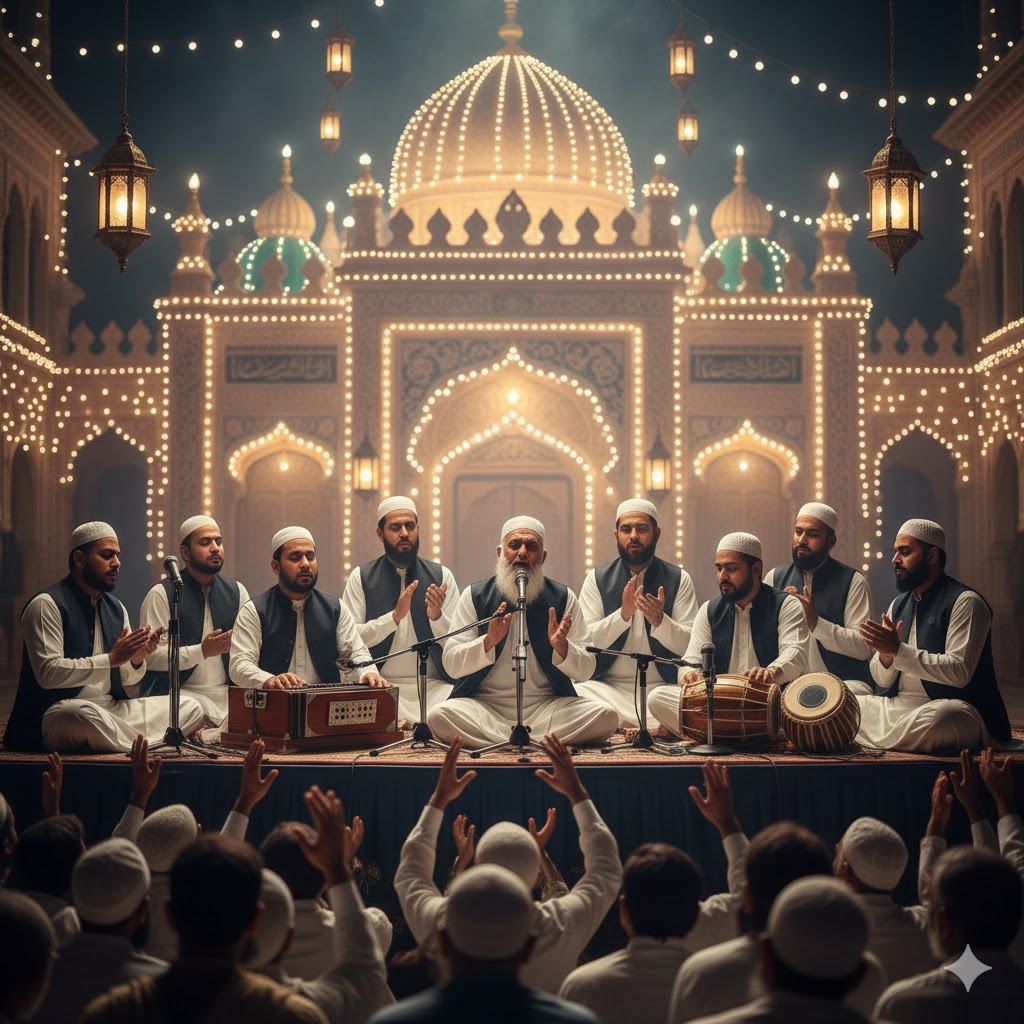
2. Sufi Poetry Gatherings and Spiritual Discussions
Many heritage walks include Sufi poetry recitals at small alleys near Bhatti Gate or courtyards of lesser-known shrines. Here, poets recite verses from Bulleh Shah, Shah Hussain, and Data Ganj Bakhsh, giving travelers a deep understanding of Lahore’s mystical literary heritage.
Hidden gems include small tea stalls where locals share stories of saints, making this a perfect spot for cultural immersion and photography. The aroma of chai and incense enhances the spiritual experience.
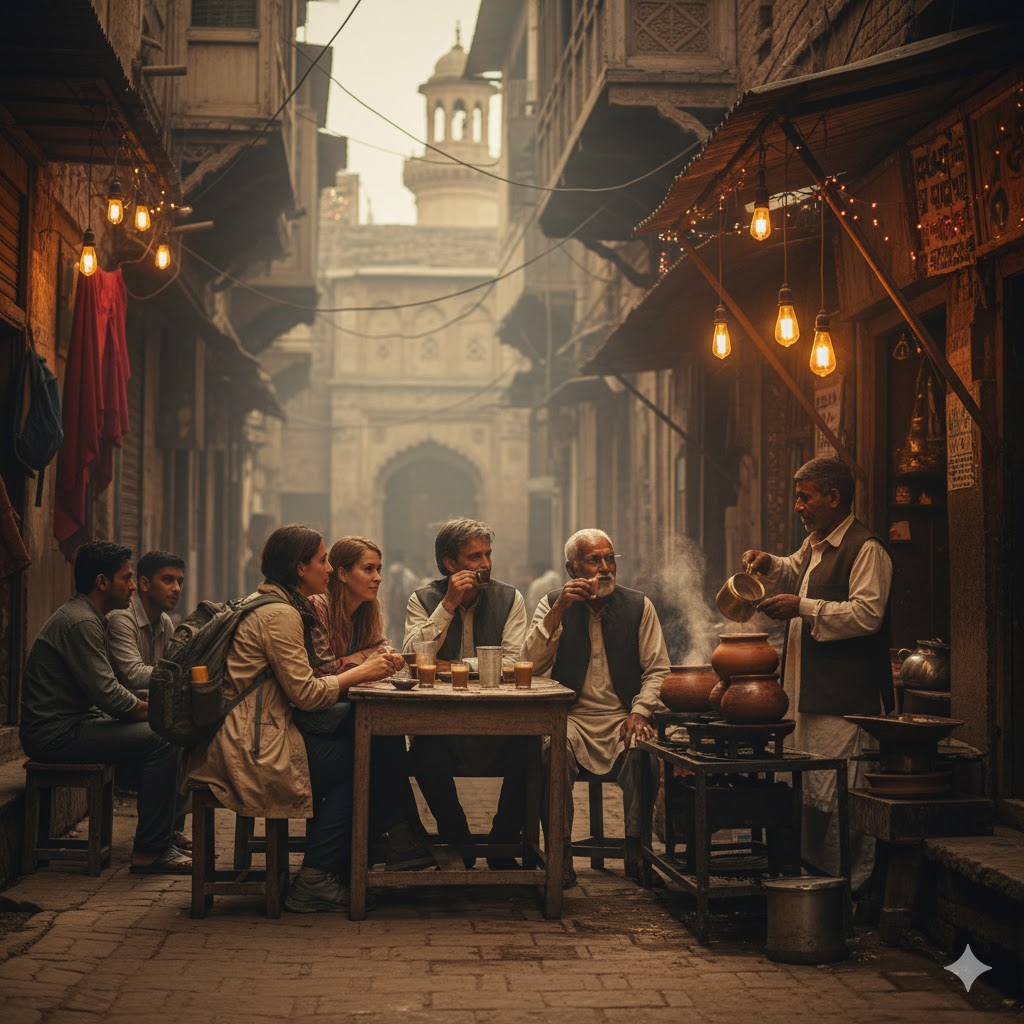
3. Hidden Experiences Off the Beaten Path
Besides the main shrines, the heritage walk guides often take visitors to lesser-known shrines and alleys, like:
- Pir Baba Shams Tabrez corner shrine
- Tiny mosques and courtyards with historical calligraphy
- Artisan workshops creating traditional Sufi crafts
These hidden spots provide authentic local interactions, capturing the essence of Lahore beyond the tourist gaze. Photography enthusiasts love these locations for low-light shots and candid cultural portraits.
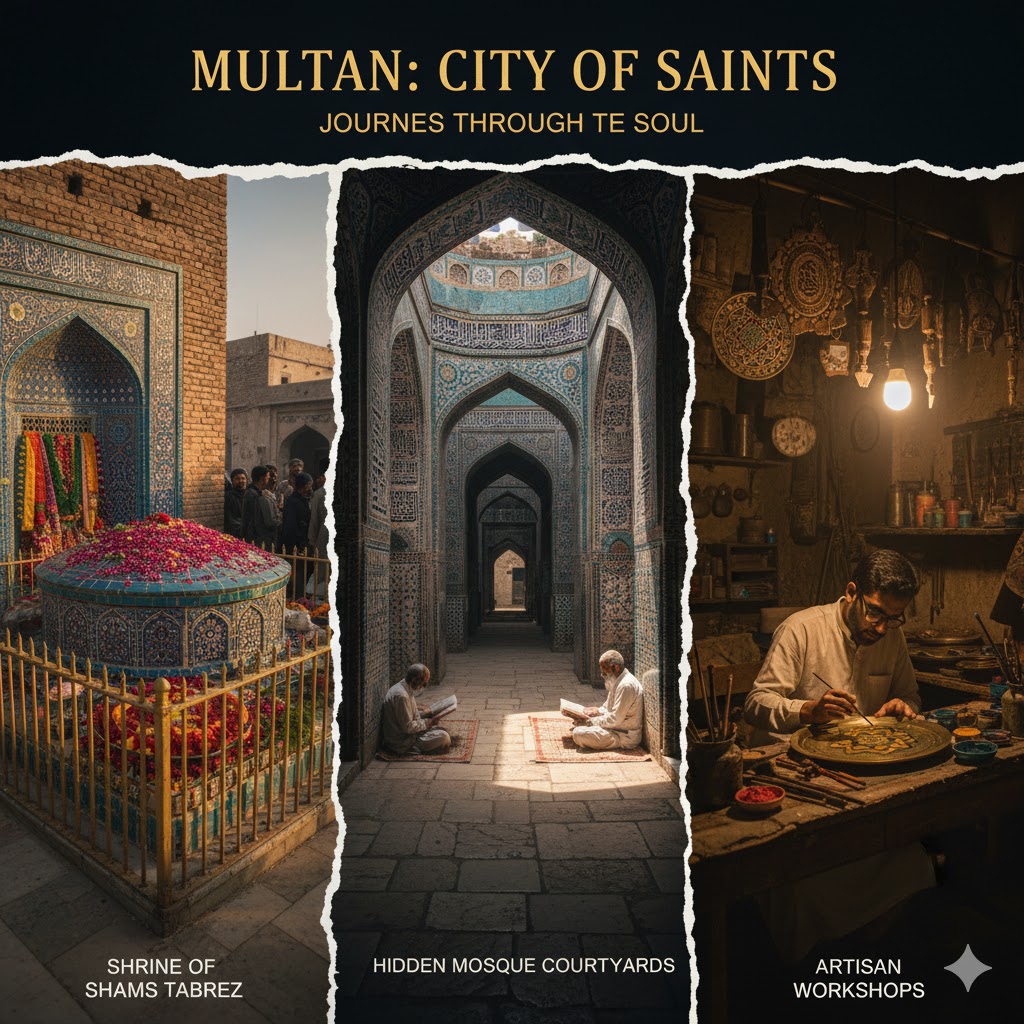
4. Food and Cultural Flavors
No Sufi walk is complete without tasting local culinary delights. Visitors can enjoy:
- Street snacks: pakoras, samosas, jalebi
- Shrine langars: free communal meals with lentils, naan, and halwa
- Specialty drinks: doodh-patti chai and rose sherbets
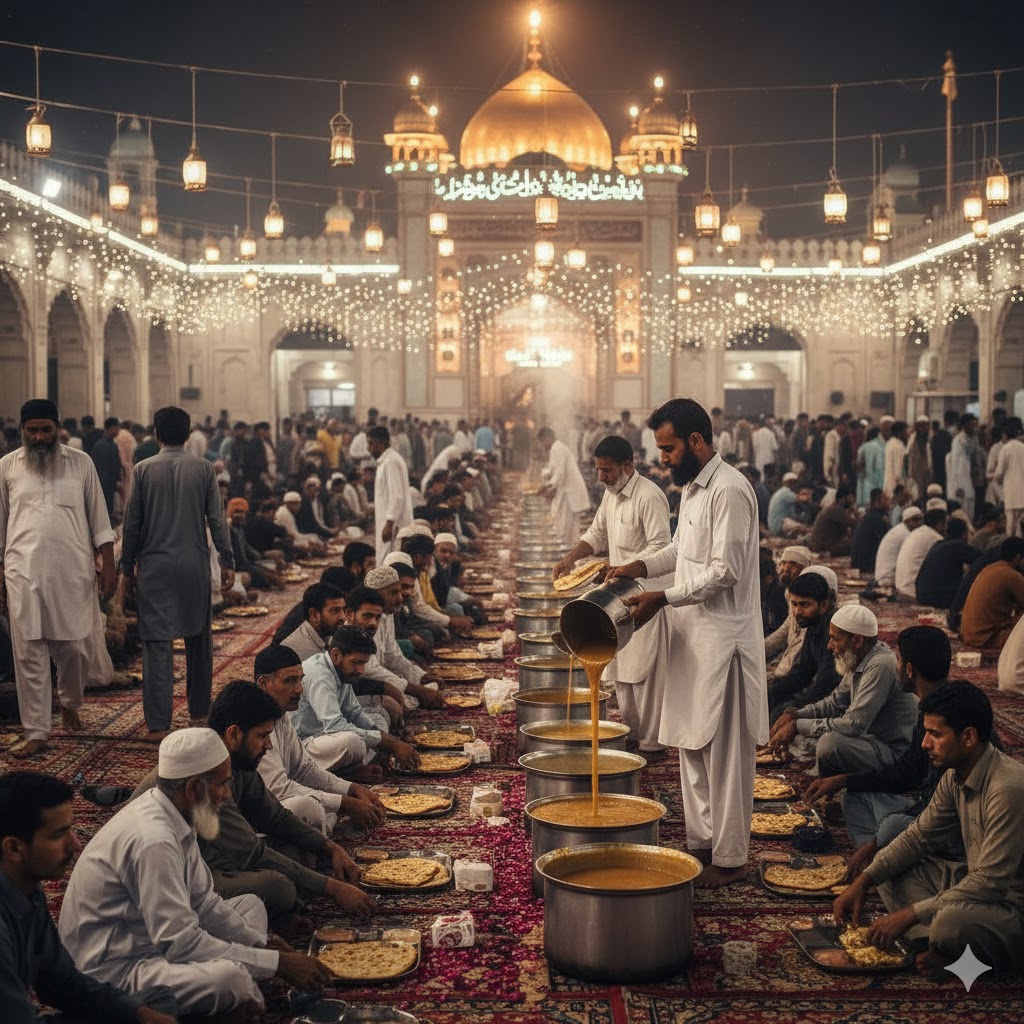
For an immersive experience, try Gawalmandi and Lakshmi Chowk eateries for authentic flavors. Locals suggest enjoying street food in moderation while walking, as some alleys can be crowded.
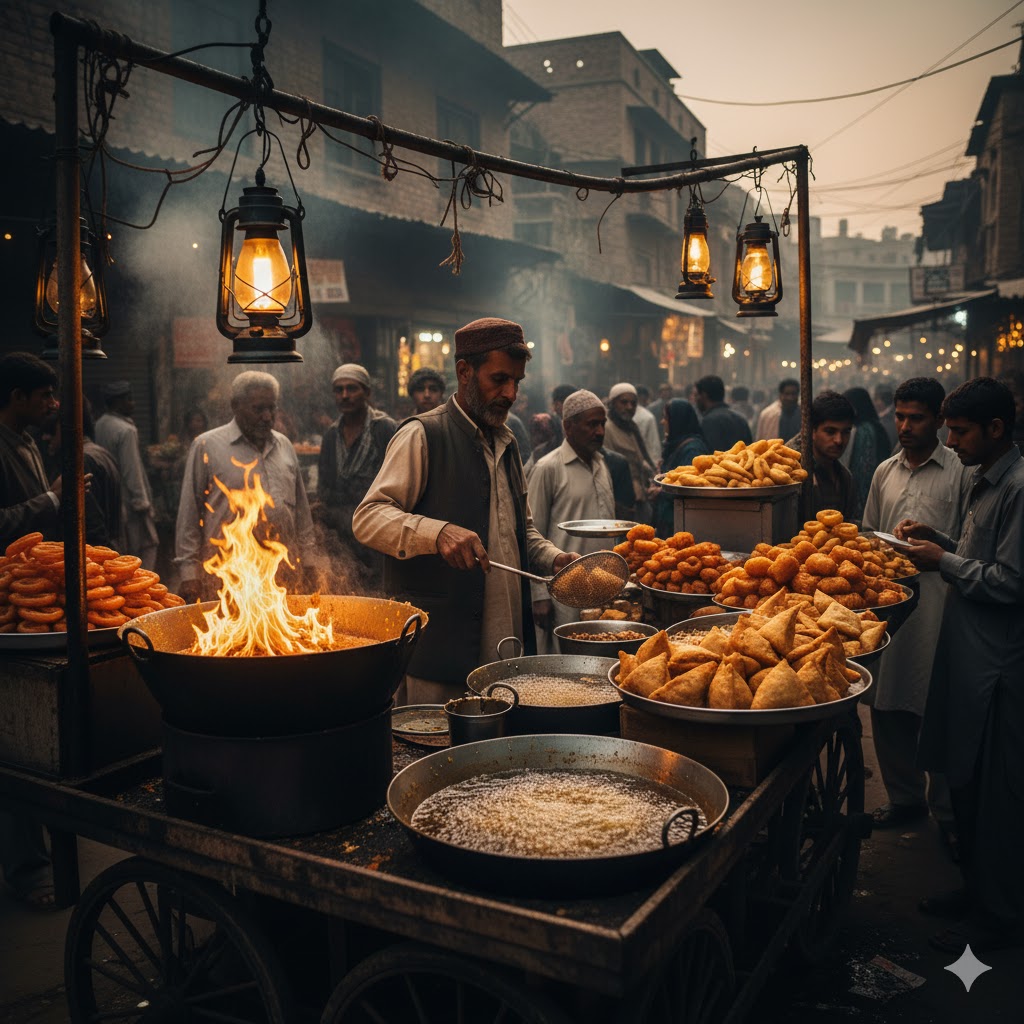
5. Photography Tips
- Evening sessions: Capture qawwali performances with shrine lighting for a cinematic feel.
- Golden hour: Photograph domes and courtyards reflecting sunlight.
- Close-ups: Candles, devotees, and ritual objects add depth and emotion.
- Candid shots: Interactions between pilgrims and guides tell authentic stories.
Pro Tip: Use a wide-angle lens for shrine architecture and a zoom lens for capturing details of rituals without disturbing devotees.
6. Accommodation & Travel Tips
- Hotels: Central Lahore hotels near Data Darbar, Bhatti Gate, or Shah Jamal offer convenient access.
- Guesthouses: Affordable options in Old City neighborhoods for immersive experiences.
- Local tips: Wear modest attire, carry a light scarf, and remove shoes in shrine areas.
- Safety: Avoid isolated alleys at night; guided walks provide security and cultural insight.
7. Best Time to Experience Sufi Heritage Walks
- Evenings & Thursdays: Qawwali nights are most vibrant.
- Spring & autumn: Pleasant weather makes walking through alleys and shrines enjoyable.
- Avoid Fridays & peak prayer hours: Shrines can be crowded, limiting access to photography and detailed experiences.
Pilgrimage Experiences, Local Stories, and Annual Sufi Events
1. Special Pilgrimage Experiences
For many visitors, the Sufi Heritage Walks are more than sightseeing — they are a spiritual journey. Pilgrims visit Data Darbar, Shah Jamal, Mian Mir, and Bibi Pak Daman to offer chadars (shrine cloths), light candles, and make prayers. Some travelers participate in langar preparation, sharing meals with devotees, an experience that connects visitors with local Sufi traditions.
Visitors often remark that joining morning or evening rituals adds depth to the walk. Locals say, “Even if you come just to watch, the energy here changes your perspective on life.”
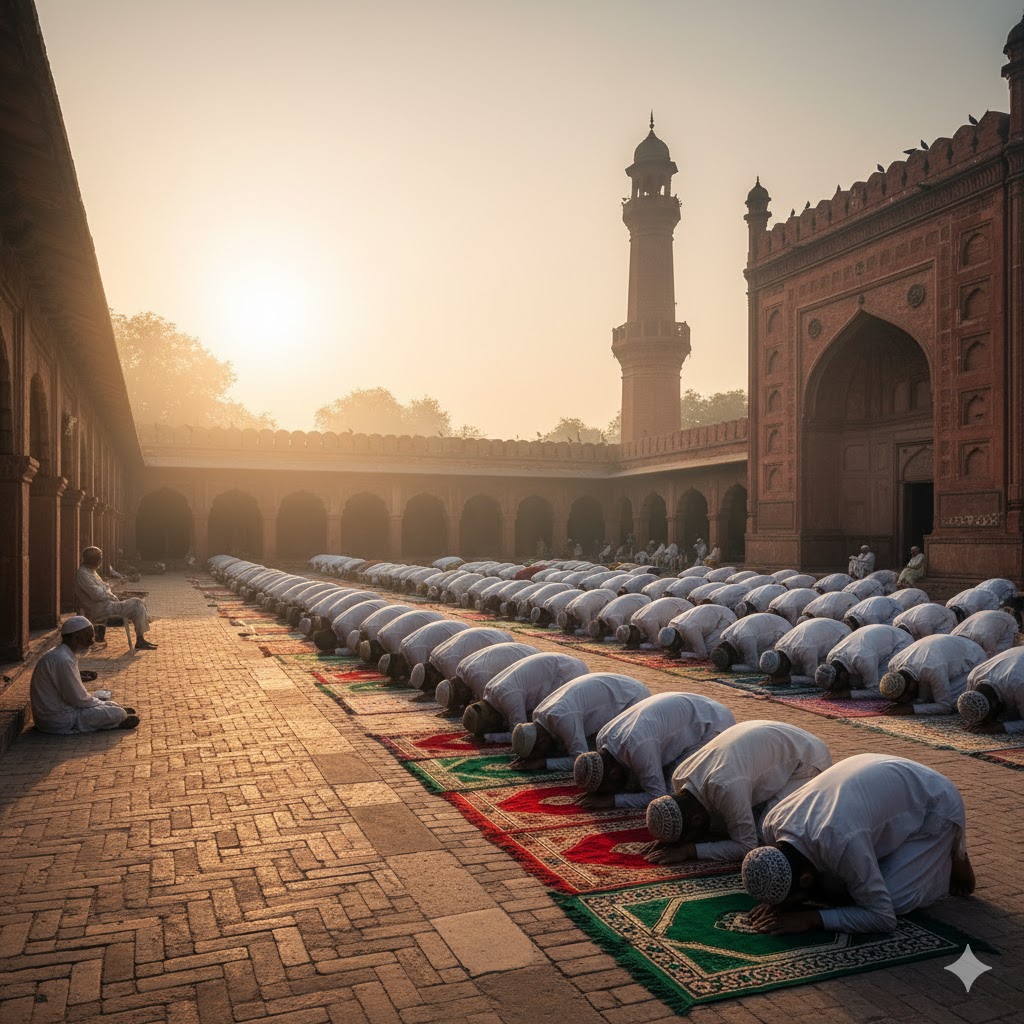
2. Stories from the Locals
Walking through Lahore’s narrow alleys, guides share stories of saints, miracles, and legends. For example:
- Mian Mir is said to have blessed Sikh Gurus, symbolizing religious harmony.
- Shah Hussain, whose shrine hosts Mela Chiraghan, pioneered Punjabi mystical poetry.
- Lesser-known shrines like Pir Baba Shams Tabrez are said to protect travelers and bless families.
Travelers often meet elderly residents who recall historical festivals, traditional music, and how Sufi practices evolved in Lahore over centuries. These personal anecdotes make the walks rich in cultural insight and memorable storytelling.
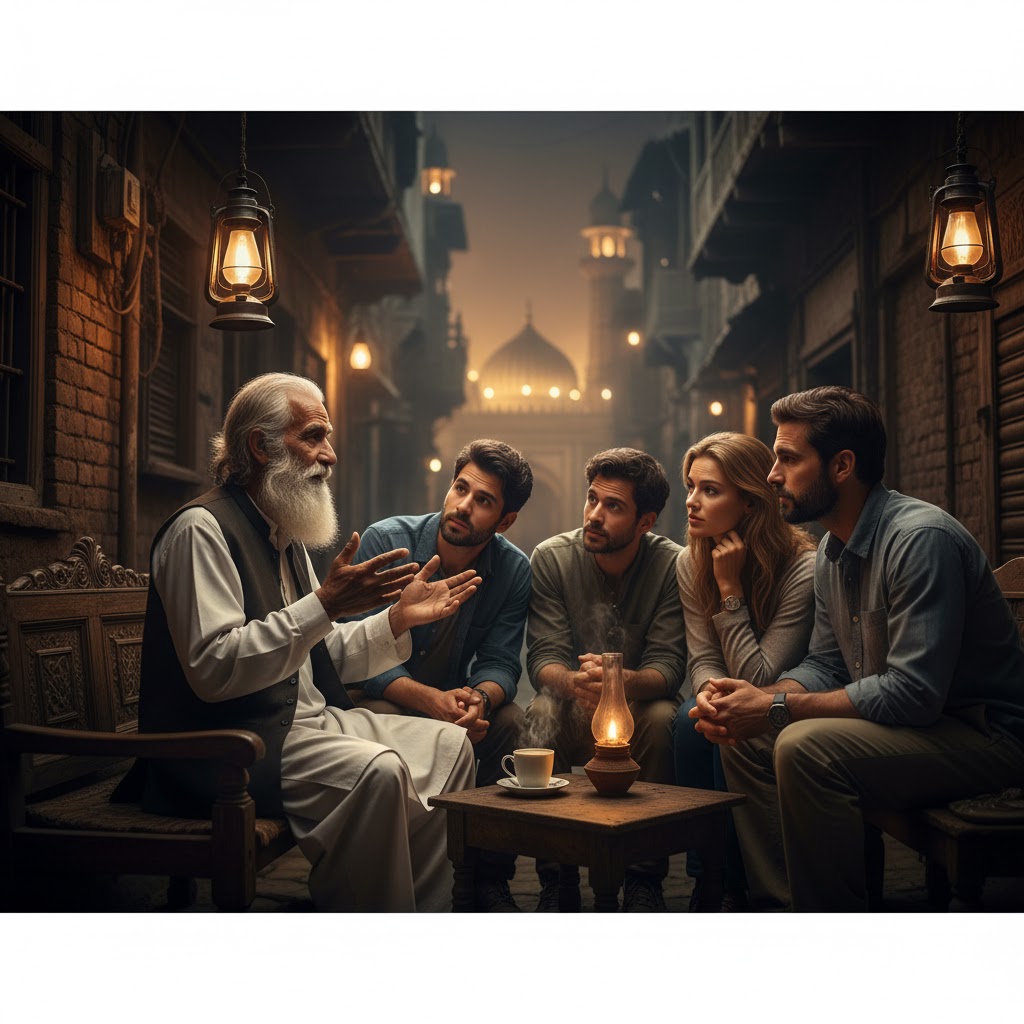
3. Annual Sufi Events on the Heritage Walk Route
Some shrines host annual festivals and special gatherings that elevate the visitor experience:
- Mela Chiraghan (March 29–31): Thousands of lamps and qawwali performances illuminate Data Darbar and surrounding streets.
- Urs of Data Ganj Bakhsh (October, 3 Days): Pilgrims from across Pakistan gather for prayers, music, and communal meals.
- Shah Jamal Trance Nights (Weekly, Thursday): Devotees experience spiritual ecstasy through dance and dhol beats.
Hidden gems include private poetry sessions in courtyards, folk music workshops, and small-scale handicraft exhibitions. These events are often overlooked by casual tourists but offer authentic immersion.
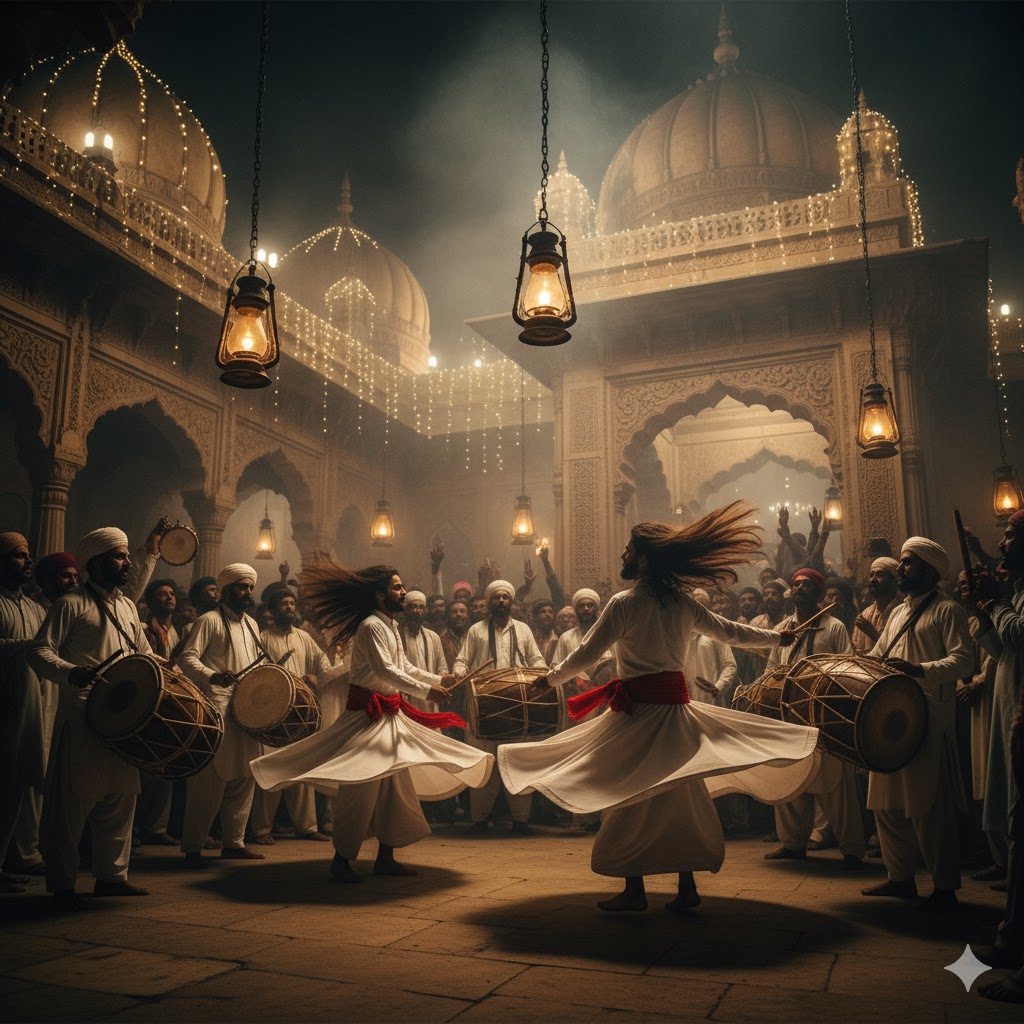
4. Cultural Interaction & Spiritual Lessons
Sufi walks allow visitors to interact with faqirs, qawwals, and shrine caretakers, learning about:
- Sufi philosophy: love, tolerance, and service.
- Devotional rituals: lighting candles, offering flowers, and prayer methods.
- Music and poetry: understanding spiritual messages in qawwali and Sufi verses.
Many travelers report feeling emotionally rejuvenated. Locals highlight that participating respectfully in rituals enhances personal experience and encourages deeper understanding of Lahore’s mystical heritage.
5. Food, Hospitality, and Local Tips
During the heritage walks, food is an integral part of the cultural journey:
- Langar meals: simple yet fulfilling vegetarian meals served at shrines.
- Street foods: samosas, pakoras, halwa, and doodh-patti chai.
- Small eateries: near Bhatti Gate and Walled City offer authentic flavors.
Local advice: dress modestly, carry a scarf, avoid disrupting prayer sessions, and use small local guides for insider tips. Safety is generally good, but walking in groups is recommended for evening alleys.
